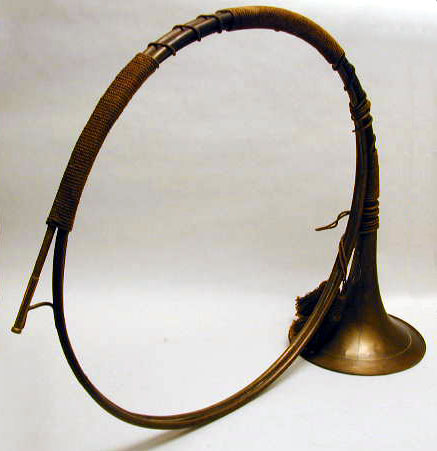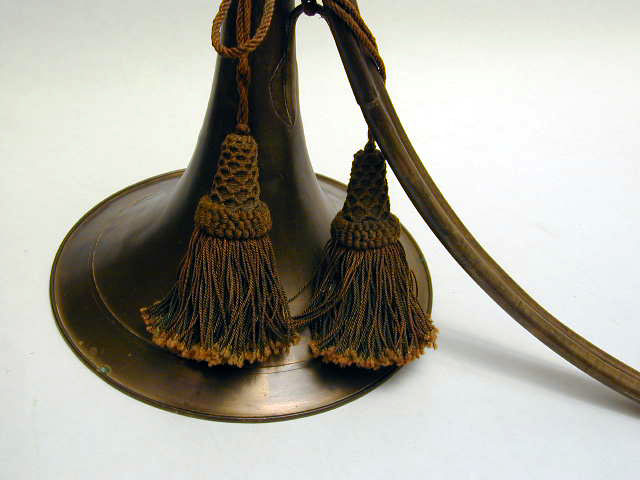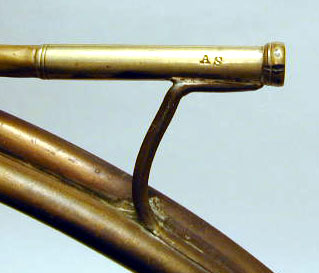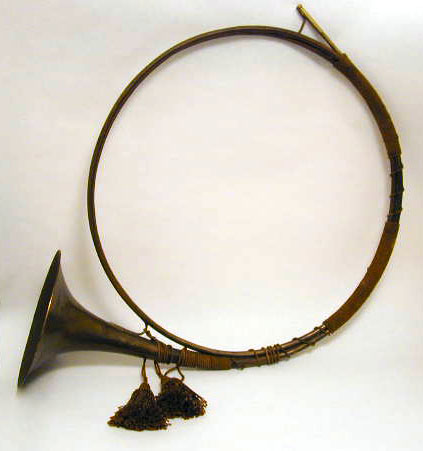Pitched in baroque C-basso (approximately modern B-natural) this horn fits neither the
French standard key of D nor the German standards of Bb or Eb for hunting horns.
Horns such as these were used for signalling during the hunt. The large diameter
permitted the horn to be slung over the huntsmans shoulder while on horseback.
At 66 cm. in diameter it is slightly larger than the similar French Dauphine designed
by Marquis de Dampierre in 1729. The stamp AS on the mouthpipe sleeve is perhaps a
makers marque and is also found on woodwind instruments in the late eighteenth century
but their origins have not been firmly established. This sleeve appears to be made of
nickel-silver, which came into general use in the nineteenth century. A similar alloy,
however, was produced as early as 1770 in Suhl, Thuringen, Germany home of the famous
hunting gun maker, J.P. Sauer und Sohn (est. 1751). A wind instrument maker by the name
of Anton Saur was known in Wasserburg am Inn, Bavaria (some 372 km from Suhl).
His license as Instrumentenmacher expired in 1815 and he is thought to have died or
quit by 1810. (Coincidentally a basset horn marked A.S. is found in the Germanishes
Nationalmuseum, Nrnberg, midway between the Suhl and Wasserberg.) The horn shows
evidence of expert repairs in the form of very fine crack filling. Horns of this type
were made in Germany as late as the second quarter of the nineteenth century.
|



